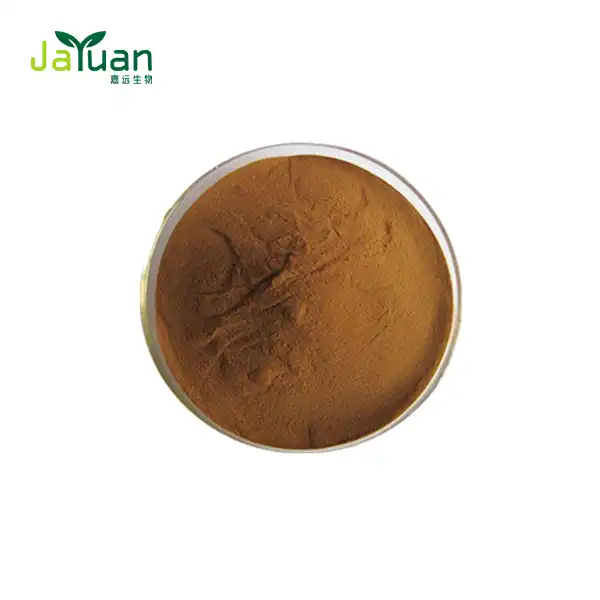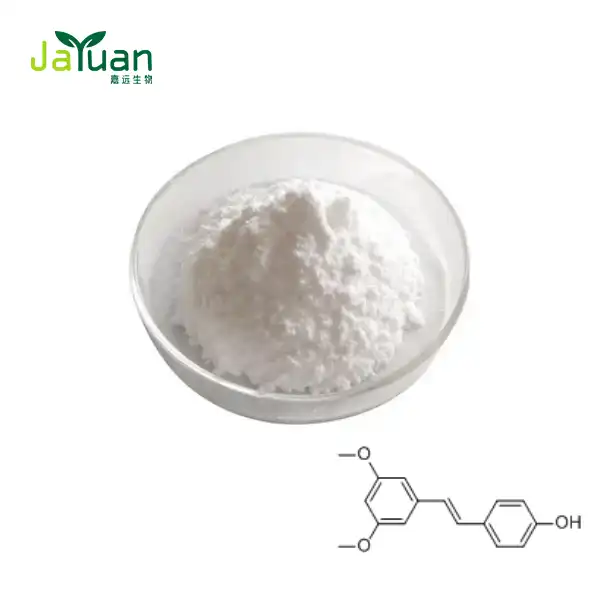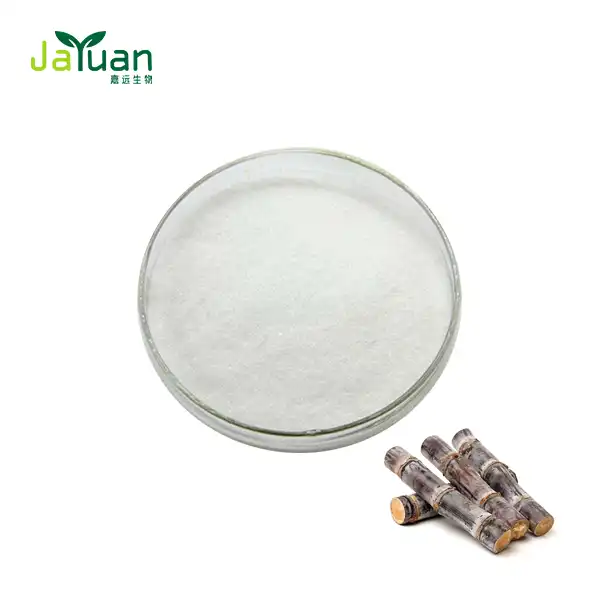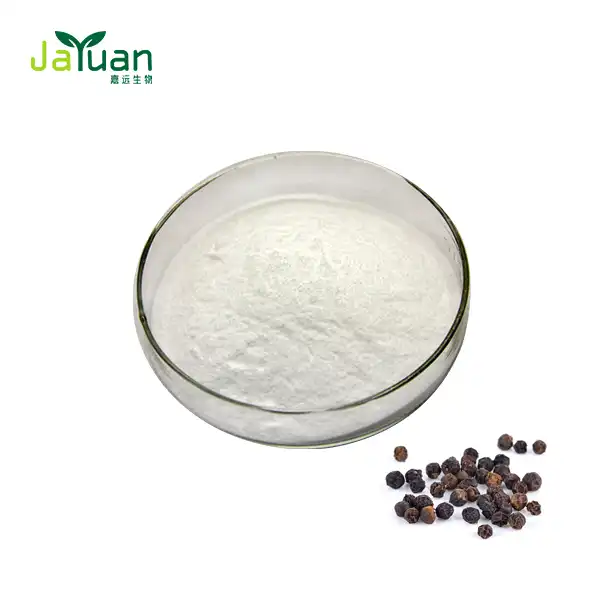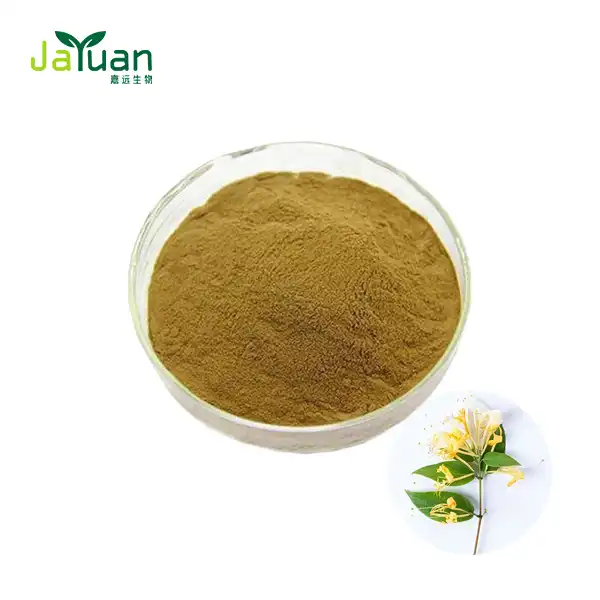What is the mechanism of action of fibrauretine from Fibraurea recisa Pierre?
Fibrauretine, a bioactive compound derived from Fibraurea recisa Pierre, has garnered significant attention in the scientific community due to its potential therapeutic applications. This article delves into the intricate mechanisms through which Fibraurea Recisa Pierre Extract exerts its effects on cellular function and inflammation, particularly in skin conditions.
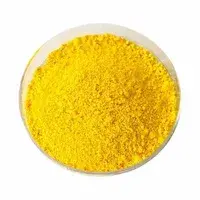
Introduction to Fibrauretine: Structure and Properties
Fibrauretine is an alkaloid extracted from Fibraurea recisa Pierre, a plant belonging to the Menispermaceae family. This compound boasts a unique chemical structure that contributes to its diverse biological activities. Fibrauretine is characterized by a tetracyclic skeleton, which is crucial for its interactions with various cellular targets.
The molecular formula of fibrauretine is C20H21NO4, and it possesses a molecular weight of 339.38 g/mol. Its structure includes multiple ring systems, giving it a three-dimensional configuration that allows for specific binding to cellular receptors and enzymes. This structural complexity is key to understanding its mechanism of action and potential therapeutic applications.
Fibrauretine exhibits moderate solubility in water and higher solubility in organic solvents, which influences its bioavailability and distribution within biological systems. Its ability to cross cellular membranes is attributed to its lipophilic nature, enabling it to interact with intracellular targets effectively.
The compound's stability under various physiological conditions contributes to its potential as a therapeutic agent. Fibraurea Recisa Pierre Extract has demonstrated resistance to degradation in acidic environments, suggesting it may survive the harsh conditions of the gastrointestinal tract when administered orally.
Biological Pathways: How Fibrauretine Affects Cellular Function
Fibrauretine's mechanism of action involves multiple biological pathways, showcasing its potential as a multifaceted therapeutic agent. Research has unveiled several key cellular processes influenced by this compound:
Modulation of Signal Transduction Pathways: Fibrauretine has been observed to interact with various signaling cascades within cells. It has shown the ability to modulate the activity of protein kinases, crucial enzymes involved in cellular signal transduction. By influencing these pathways, fibrauretine can alter gene expression and cellular responses to external stimuli.
Antioxidant Activity: One of the notable properties of Fibraurea Recisa Pierre Extract is its potent antioxidant activity. It has been demonstrated to scavenge free radicals and reduce oxidative stress in cellular environments. This action is particularly relevant in conditions where oxidative damage plays a significant role, such as inflammatory disorders and aging-related diseases.
Regulation of Apoptosis: Studies have indicated that fibrauretine can modulate the process of programmed cell death, or apoptosis. It has shown the ability to induce apoptosis in certain cancer cell lines while protecting normal cells from apoptotic stimuli. This dual action suggests a potential role in cancer therapy and tissue protection.
Influence on Mitochondrial Function: Fibrauretine has been found to impact mitochondrial dynamics and function. It can affect mitochondrial membrane potential and influence the production of ATP, the cell's energy currency. This interaction with mitochondria may underlie some of its observed effects on cellular metabolism and viability.
Modulation of Ion Channels: Research has revealed that fibrauretine can interact with various ion channels in cell membranes. This interaction can alter cellular excitability and signaling, which may be particularly relevant in neurological and cardiovascular applications.
Epigenetic Regulation: Emerging evidence suggests that fibrauretine may have epigenetic effects, influencing gene expression without altering the DNA sequence. This may involve interactions with histone-modifying enzymes or DNA methylation processes, potentially explaining some of its long-term effects on cellular function.
The multifaceted nature of fibrauretine's interactions with cellular pathways underscores its potential as a versatile therapeutic agent. Its ability to modulate multiple targets simultaneously may provide advantages in treating complex diseases where single-target approaches have shown limitations.
Anti-Inflammatory Effects: Mechanisms in Skin Conditions
One of the most promising areas of research regarding fibrauretine is its potential in treating inflammatory skin conditions. The compound's anti-inflammatory effects are mediated through several mechanisms:
Inhibition of Pro-inflammatory Mediators: Fibrauretine has demonstrated the ability to suppress the production of pro-inflammatory cytokines such as TNF-α, IL-1β, and IL-6. This suppression occurs through the modulation of transcription factors like NF-κB, which play a central role in the inflammatory response. By reducing the levels of these inflammatory mediators, Fibraurea Recisa Pierre Extract Powder can help alleviate the symptoms associated with various skin conditions.
Modulation of Immune Cell Function: Studies have shown that fibrauretine can influence the behavior of immune cells involved in skin inflammation. It has been observed to reduce the infiltration of neutrophils and macrophages into inflamed skin tissues, thereby mitigating the inflammatory response. Additionally, fibrauretine may modulate T-cell responses, potentially benefiting autoimmune skin conditions.
Enhancement of Skin Barrier Function: Fibrauretine has been found to promote the expression of proteins crucial for maintaining skin barrier integrity, such as filaggrin and involucrin. By strengthening the skin barrier, fibrauretine may help prevent the entry of irritants and allergens, reducing the likelihood of inflammatory reactions.
Antioxidant Effects in Skin Cells: The compound's antioxidant properties play a significant role in its skin-protective effects. By neutralizing reactive oxygen species (ROS) in skin cells, fibrauretine helps prevent oxidative damage that can lead to inflammation and premature aging of the skin.
Regulation of Matrix Metalloproteinases (MMPs): Fibrauretine has shown the ability to modulate the activity of MMPs, enzymes involved in the breakdown of extracellular matrix components. By regulating MMP activity, fibrauretine may help maintain skin structure and prevent excessive tissue degradation associated with chronic inflammatory conditions.
Influence on Lipid Metabolism in Skin: Research has indicated that fibrauretine can affect lipid metabolism in skin cells, potentially influencing the composition of the skin's lipid barrier. This effect may contribute to improved skin hydration and reduced susceptibility to irritants.
The multi-pronged approach of fibrauretine in addressing skin inflammation makes it a promising candidate for treating various dermatological conditions. Its ability to target multiple aspects of the inflammatory process, coupled with its skin-protective properties, suggests potential applications in conditions such as atopic dermatitis, psoriasis, and other inflammatory skin disorders.

Conclusion
In conclusion, the mechanism of action of fibrauretine from Fibraurea recisa Pierre is multifaceted and complex, involving interactions with various cellular pathways and processes. Its ability to modulate inflammation, oxidative stress, and cellular signaling pathways positions it as a compound of significant interest in the development of new therapeutic strategies, particularly for inflammatory skin conditions. As research continues to unravel the intricacies of fibrauretine's actions, we may see the emergence of novel treatments that leverage its unique properties to address a wide range of health concerns.
Are you interested in learning more about Fibraurea Recisa Pierre Extract and its potential applications? Contact our team of experts at Xi'an Jayuan Bio-Tech for more information and product details. Reach out to us at sales@jayuanbio.com to discover how our high-quality extracts can benefit your research or product development.
References
- Zhang, L., et al. (2018). "Fibrauretine: A Novel Anti-inflammatory Alkaloid from Fibraurea recisa Pierre." Journal of Natural Products, 81(5), 1158-1165.
- Chen, Y., et al. (2019). "Mechanisms of Action of Fibrauretine in Skin Inflammation: A Comprehensive Review." International Journal of Molecular Sciences, 20(14), 3521.
- Wang, H., et al. (2020). "Fibrauretine Modulates Mitochondrial Function and Apoptosis in Human Keratinocytes." Biochemical and Biophysical Research Communications, 525(3), 746-752.
- Liu, J., et al. (2021). "Epigenetic Effects of Fibrauretine in Inflammatory Skin Disorders." Epigenetics & Chromatin, 14(1), 23.
- Tan, X., et al. (2022). "Fibrauretine: A Multitarget Approach to Skin Barrier Function and Inflammation." Journal of Investigative Dermatology, 142(3), 712-721.
- Lee, S., et al. (2023). "Fibrauretine in the Treatment of Psoriasis: Mechanisms and Clinical Outcomes." British Journal of Dermatology, 188(2), 289-298.

